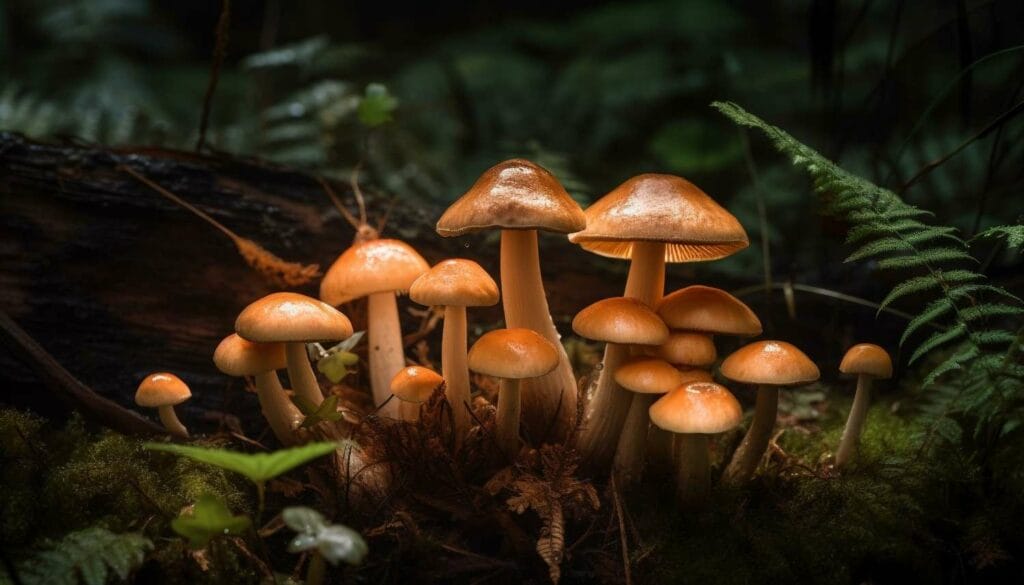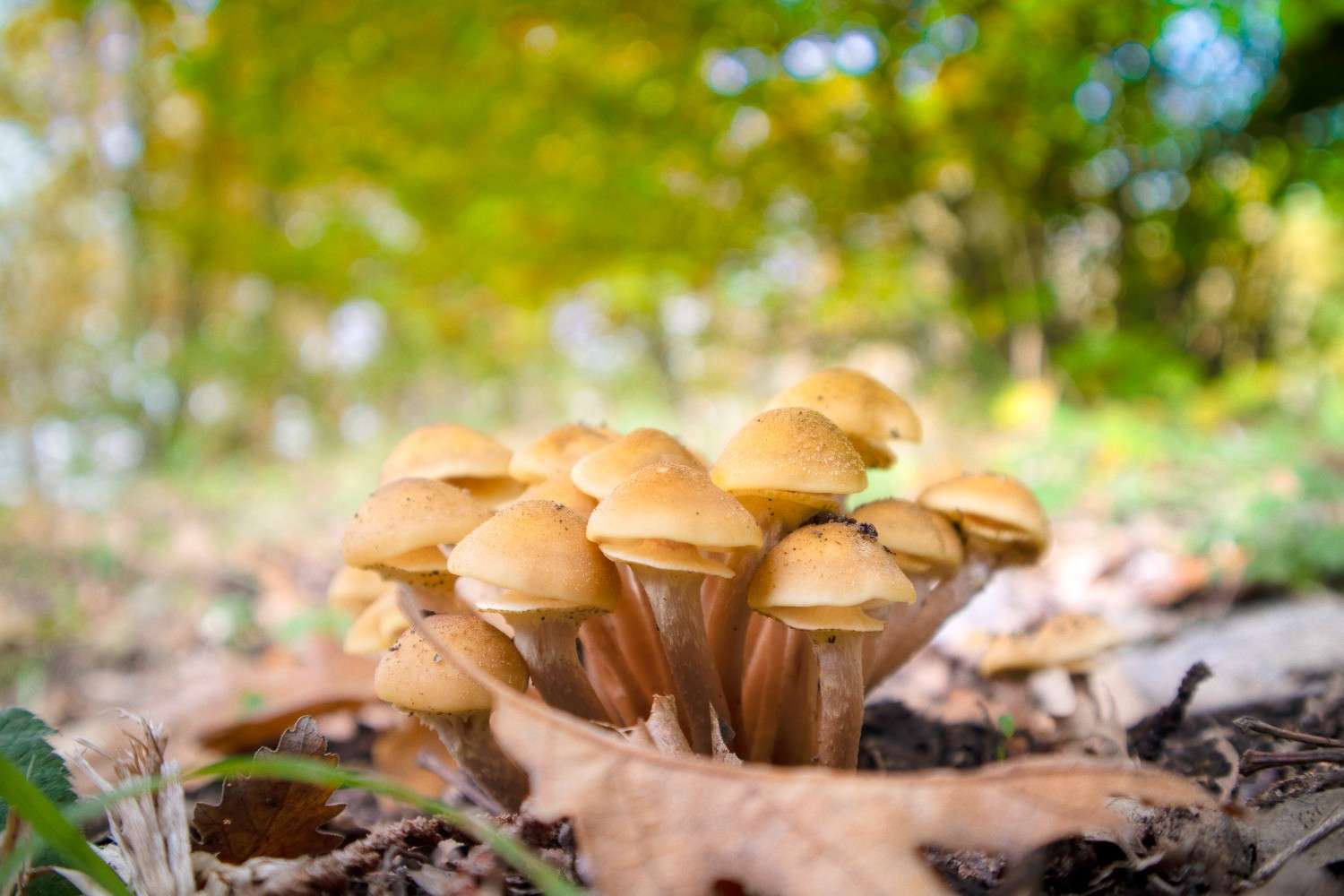Shrooms Canada has drawn significant attention, attracting substantial investment for potential medicinal applications, propelling scientific exploration, and fostering a growing acceptance among the public.
Two recent studies highlight psilocybin mushrooms’ prevalence as a commonly used psychoactive substance.
Eric Leas, an epidemiologist at the University of California, San Diego, noted a 1,250% increase in microdosing-related online searches since 2015, with psilocybin overtaking LSD in 2019. Additionally, a study by the RAND Corporation indicates that approximately 3% of Americans – roughly 8 million adults – used psilocybin in the last year, making it the most popular hallucinogen in 2023.
Let’s explore the global fascination with shrooms.
[toc]
What Does Microdosing Entail?
Psychedelic microdosing is the act of consuming a small amount of a hallucinogenic substance to achieve a beneficial mental effect without experiencing a full psychedelic trip. This usually involves taking only 10-20% of a dose that would cause a psychoactive response. The goal is to ingest a small quantity of a psychedelic substance without significantly altering consciousness.
Historically, microdoses of magic mushrooms and peyote were used to mitigate physical symptoms and promote wellness. During the 1960s, the practice of microdosing expanded to include LSD as individuals pursued enhanced cognitive performance and creativity.
Today, microdosing also includes substances like MDMA, Ritalin, cannabis, and ketamine, which, although they can cause hallucinations at higher doses, do not provoke a psychedelic experience when microdosed.
Comparing Microdosing and Full Dose Experiences
| Aspect | Microdosing | Full Dose (Psychedelic) | ||
| Dosage | 0.1 to 0.3 grams of dried mushrooms | 1 to 3 grams or more of dried mushrooms | ||
| Frequency | Regular (e.g., every few | Frequency of Use | Infrequent (a few times a year) | Occasional |
| Effect Duration | Slight interruption to daily activities | Altered state persists for 4-6 hours | ||
| Sensory Impact | Hallucinations (altered or fabricated sensory impressions), heightened emotional and sensory experiences (intensified colors, amplified sounds), and synesthesia (like “seeing” sounds or “hearing” colors) | Minor sensory alterations, modest mood and perception improvements, and enhanced concentration and creativity | ||
| Physical Impact | Minimal to zero physical effects | Increased energy and heart rate, accompanied by feelings of nausea |
The Rise of Psilocybin Microdosing
Approximately half of the users who consumed psilocybin in the last year chose to microdose, a method favored by tech industry workers and suburban mothers. Microdosing entails taking 1/10 to 1/20 of a standard dose. The majority of microdosers use psilocybin no more than once or twice a year, with a scant 11% consuming it over six times. Over half prefer natural or dried mushrooms, while the rest use processed forms such as chocolate bars or teas.
The interest in microdosing is associated with evolving laws around cannabis and psychedelics. States like Oregon and Colorado, where psychedelics derived from plants are decriminalized, show the greatest interest in microdosing.
Studies suggest an increase in psilocybin intake, especially in nightlife settings, where it competes with drugs like ecstasy and ketamine. A study estimated that 5.5 million adults used hallucinogens in 2019, with a significant surge in LSD use.
Key Factors Behind the Growing Microdosing Trend
The RAND survey highlighted the top three reasons Canadians consume psilocybin:
Enjoyment and Social Interaction
Many Canadians ingest these psychedelic mushrooms for the sake of enjoyment and to create a unique communal experience. The group dynamics involved in consuming psilocybin at events or social gatherings add to its appeal.
Mental Health
A significant proportion of users turn to psilocybin owing to its potential mental health benefits. Notably, an observational study in Nature-Scientific Reports Trusted Source indicates that microdosing psilocybin mushrooms
Teas provide an alternative method of microdosing psilocybin, incorporating the substance into a soothing beverage.
- Method of preparation: Psilocybin is infused into a tea blend through steeping or boiling.
- Dosage: Measured in portions or cups, allowing for easy adjustment of intake.
- Method of intake: Drunk like any regular tea, often flavored to offset the mushroom’s natural taste.
Psilocybin Capsules
These capsules provide a simpler, more standardized method of microdosing. Studies have found that they can assist in managing mental health disorders. It was observed that those who microdosed showed improvement in symptoms of depression, anxiety, and stress compared to those who didn’t.
- Consumption: Capsules offer a hassle-free ingestion method, eliminating the need for separate preparation or measurement.
Psilocybin Extracts
Psilocybin extracts provide a concentrated dosage, ensuring a consistent and precise dose every time.
- Method of preparation: Psilocybin is extracted from the mushrooms using solvents such as alcohol.
- Dosage: Extracts are measured in milligrams, ranging from 1 to 10 milligrams per microdose.
- Method of intake: They can be taken directly, mixed with beverages, or put into capsules.
Psilocybin Edibles
Edibles provide a unique way to microdose by integrating psilocybin into food items like chocolates, gummies, or other treats.
- Method of preparation: Psilocybin is incorporated into edible items during the cooking or manufacturing process.
- Dosage: Each edible contains a specific amount of psilocybin, ensuring consistent dosage.
- Method of intake: They’re consumed like any other food, often with a pleasant flavor to mask the taste of the mushroom.
Psilocybin Tinctures
Tinctures are liquid extracts that facilitate easy dosage and quick absorption.
- Method of preparation: Psilocybin is extracted into a base of alcohol or glycerin.
- Dosage: Measured in drops or milliliters, allowing for precise control over the amount taken.
- Method of intake: It can be placed under the tongue or mixed into a drink.
Psilocybin Teas
Teas are a traditional way to consume psilocybin, providing a soothing and serene experience.
- Preparation Method: Hot water is used to soak dried mushrooms, often along with herbs or other flavorings to improve the taste.
- Dosage: The strength of the tea is dictated by the amount of mushrooms used. Common Microdoses generally range from 0.1 to 0.3 grams.
- Consumption Method: It can be consumed like any other herbal tea.
Available Products at Shrooms Canada
| Product | Type | Dosage | Onset Time | Duration | Effects |
| Trans Envy Magic Mushrooms | Psilocybin Mushrooms | Usually, 0.1 to 0.3 grams per microdose. | 30-60 minutes | 2-4 hours | Boosts mood, stimulates visual changes, encourages introspection |
| Kind Stranger – Microdose Capsules | Psilocybin Capsules | One capsule contains 250 mg (15 capsules per bottle). | 30-60 minutes | 2-4 hours | Enhances clarity, creativity, focus, and helps in stress management |
Main Point
The global trend of microdosing psilocybin mushrooms, led by Canada, represents a significant change in how psychoactive substances are perceived and used. As research continues and regulations evolve, the potential therapeutic benefits of psilocybin could revolutionize the treatment of various mental health conditions and improve overall well-being.
Frequently Asked Questions
What are the Important Tips for Microdosing?
- Use a precise scale if your dose is not pre-measured.
- Start your first dose on a calm, regular day when you are in good health.
- Ensure you are in a safe environment without any distractions.
- Commit to your chosen protocol for a duration of 4-10 weeks.
- Start with a small quantity and adjust as needed to attain the desired effects.
- Take your microdose in the morning to avoid disturbing your sleep pattern.
- Initially, abstain from alcohol and other mind-altering substances. CBD can be beneficial.
- Keep a record of your microdosing in a journal, noting down the dosage, time, diet, activities, and observed effects.
- Exercise patience and allow the microdosing routine to produce effects over time.
Decoding the Fadiman Protocol
Designed by psychologist James Fadiman, the Fadiman Protocol is a microdosing strategy that suggests taking a microdose on the first day and then refraining for the next two days. This regimen continues for a duration ranging from 4 to 10 weeks.
The primary objective of this protocol is to advocate a balanced method to microdosing. It helps stave off tolerance buildup and allows the body to recover between doses. This balance ensures users can continually enjoy the advantages of microdosing without a diminishing effect over time.
Unraveling the Stamets Stack Protocol
Conceived by mycologist Paul Stamets, the Stamets Stack Protocol recommends dosing for four consecutive days, followed by a three-day hiatus. This protocol stands out due to the inclusion of supplements like Lion’s Mane mushroom and Niacin.
Lion’s Mane is valued for its potential to instigate neurogenesis, while Niacin is used to enhance absorption. Similar to the Fadiman Protocol, this routine lasts for 4 to 10 weeks. The combination of substances in the Stamets Stack is designed to boost cognitive function and foster overall brain health.
Articles that might interest you:




